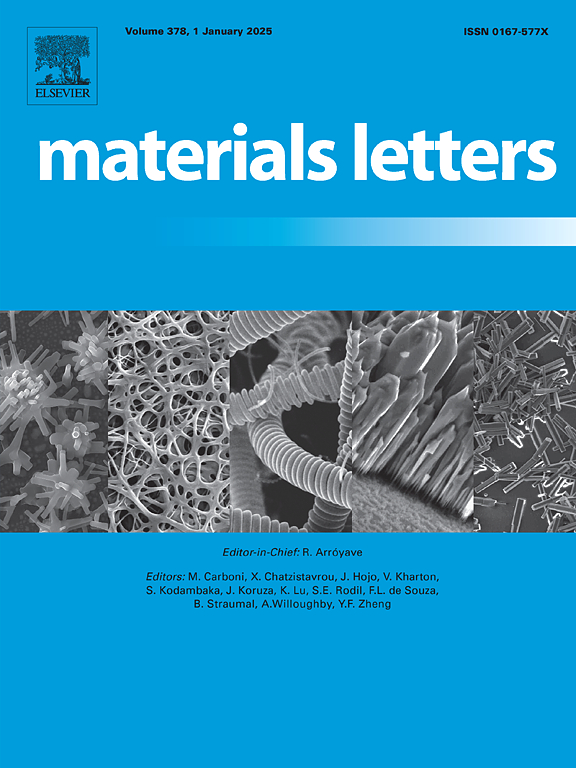Phosphorus-doped torreya shell-derived hard carbon anodes for ultra-low capacity decay rate of sodium-ion batteries
IF 2.7
4区 材料科学
Q3 MATERIALS SCIENCE, MULTIDISCIPLINARY
引用次数: 0
Abstract
Hard carbon anodes for sodium-ion batteries (SIBs) still suffer from poor initial coulombic efficiency and an ambiguous Na+ storage mechanism. Here, we proposed a novel phosphorus-doped torreya shell-derived hard carbon (P-TSHC) as an anode for SIBs via a feasible two-step carbonization technique. Effects of P contents in hard carbon on porous structure, plane d-spacing, and electrochemical properties were investigated. In particular, P-TSHC15 exhibits the most excellent electrochemical performance with a superior rate capability up to 8 A g−1 and an ultra-low capacity decay rate of 0.075 % per cycle within 1000 cycles at 1 A g−1. This should be mainly attributed to P-doping, which expands the interlayer spacing for better Na+ accommodation in mesoporous filling mechanism, generates more defects and specific surface areas, and provides transport channels for Na+, thereby increasing the low-voltage plateau capacity. This work will provide a route for further property optimization of biomass hard carbon for SIBs.

求助全文
约1分钟内获得全文
求助全文
来源期刊

Materials Letters
工程技术-材料科学:综合
CiteScore
5.60
自引率
3.30%
发文量
1948
审稿时长
50 days
期刊介绍:
Materials Letters has an open access mirror journal Materials Letters: X, sharing the same aims and scope, editorial team, submission system and rigorous peer review.
Materials Letters is dedicated to publishing novel, cutting edge reports of broad interest to the materials community. The journal provides a forum for materials scientists and engineers, physicists, and chemists to rapidly communicate on the most important topics in the field of materials.
Contributions include, but are not limited to, a variety of topics such as:
• Materials - Metals and alloys, amorphous solids, ceramics, composites, polymers, semiconductors
• Applications - Structural, opto-electronic, magnetic, medical, MEMS, sensors, smart
• Characterization - Analytical, microscopy, scanning probes, nanoscopic, optical, electrical, magnetic, acoustic, spectroscopic, diffraction
• Novel Materials - Micro and nanostructures (nanowires, nanotubes, nanoparticles), nanocomposites, thin films, superlattices, quantum dots.
• Processing - Crystal growth, thin film processing, sol-gel processing, mechanical processing, assembly, nanocrystalline processing.
• Properties - Mechanical, magnetic, optical, electrical, ferroelectric, thermal, interfacial, transport, thermodynamic
• Synthesis - Quenching, solid state, solidification, solution synthesis, vapor deposition, high pressure, explosive
 求助内容:
求助内容: 应助结果提醒方式:
应助结果提醒方式:


